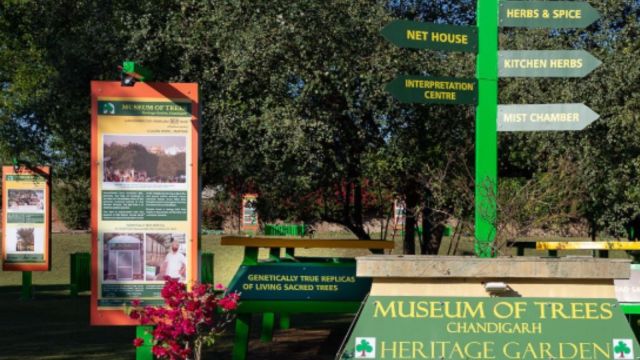Manuka tree, curated by environmentalist D S Jaspal, planted at Museum of Trees
The sapling, propagated in the museum’s Plant Breeding Centre, was planted in the Kiwi Grove, an enclosure dedicated to iconic trees of New Zealand that already features three species: Kauri, Totara, and Black Beech.
 The Museum currently houses over 350 species from India and across the world, including true genotypes of 12 sacred trees of Sikhism that have been successfully reproduced through cloning. (Source: Instagram)
The Museum currently houses over 350 species from India and across the world, including true genotypes of 12 sacred trees of Sikhism that have been successfully reproduced through cloning. (Source: Instagram)The Museum of Trees in Chandigarh, created and curated by author and environmentalist D S Jaspal, added a new highlight to its collection on Monday with the planting of a Manuka (Leptospermum scoparium) tree, the species famed worldwide as the source of Manuka honey.
The sapling, propagated in the museum’s Plant Breeding Centre, was planted in the Kiwi Grove, an enclosure dedicated to iconic trees of New Zealand that already features three species: Kauri, Totara, and Black Beech.
The ceremonial planting was carried out by Joanna Gill, sister-in-law of former New Zealand cricket captain Glenn Turner, marking what organisers described as a symbolic gesture of “ecological friendship” between India and New Zealand.
Among those present were Aman Jaspal, Vinod Sharma, Sukhi Gill, Sameena, Amaania, and Akaal Bir.
Funded by the Ministry of Culture and promoted by the Chandigarh Nature and Health Society, the Museum of Trees is described as the world’s first project dedicated to preserving and propagating sacred, rare, and culturally significant trees through scientific conservation. It currently houses over 350 species from India and across the world, including true genotypes of 12 sacred trees of Sikhism that have been successfully reproduced through cloning.
Speaking on the occasion, assistant curator Aman Jaspal said, “The Kiwi Grove symbolises the living friendship between India and New Zealand, reminding us that ecological harmony knows no borders.”







